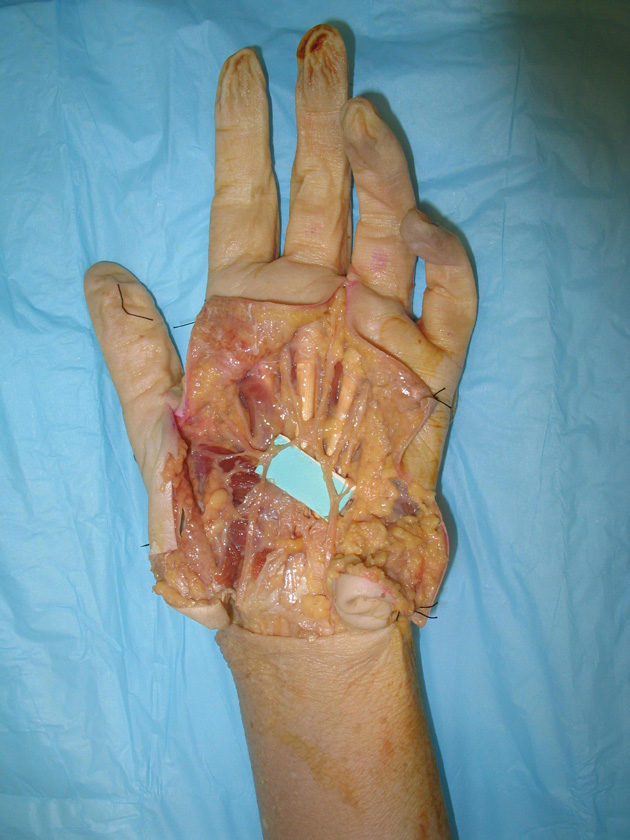Sunday, October 8, 2006
11242
Anatomic Landmarks to the Superficial and Deep Palmar Arches
Purpose: The superficial and deep palmar arches provide the dominant blood supply to the hand. Accurate knowledge of their respective locations would help avoid iatrogenic injuries, facilitate surgical treatment of vascular occlusive disease, and interpret abnormal arteriograms. The purpose of our study was to identify the location of the palmar arches in relation to surface and bony landmarks in the hand. Methods: Surface landmarks of the distal wrist crease and Kaplan's cardinal line were marked on 48 fresh cadaveric hands. Kaplan's cardinal line was defined as the transverse line drawn from the ulnar border of the thumb extending to the hook of hamate. A longitudinal line was marked extending from the radial border of the ring finger. Incisions were made along the palmar surface landmarks and skin flaps were raised. The superficial palmar arch (SPA) was identified under the palmar aponeurosis, and the deep palmar arch (DPA) was located under the floor of the carpal tunnel. The most distal points of the palmar arches were measured in relation to Kaplan's line, the distal wrist crease, and carpometacarpal joint of the ring finger. Subsequently, 30 arteriograms of the upper extremity were viewed. The distances from the radiocarpal joint to the superficial and deep palmar arches were measured. Results: The SPA was found to be on average 11.6 mm (+/- 5.66 mm) distal to Kaplan's line, and 48.0 mm (+/- 4.56 mm) distal to the distal wrist crease. The DPA was on average 4.75 mm (+/-3.84) distal to Kaplan's line, and 38.2 mm (+/- 4.30 mm) distal to the distal wrist crease. The average distances from the SPA and DPA to the carpometacarpal joint of the ring finger were 35.9 mm (+/- 7.10 mm), and 20.3 mm (+/- 6.48 mm), respectively. These findings were confirmed on measurement by upper extremity arteriograms. Conclusions: Both the SPA and DPA were noted to be located at consistent distances from easily identifiable surface and bony landmarks. Knowledge of these predictable anatomic relations would aid clinicians in surgical dissection, treatment of vascular occlusive disease, and interpretation of abnormal arteriograms when only one arch is present.

View Synopsis (.doc format, 1302.0 kb)
